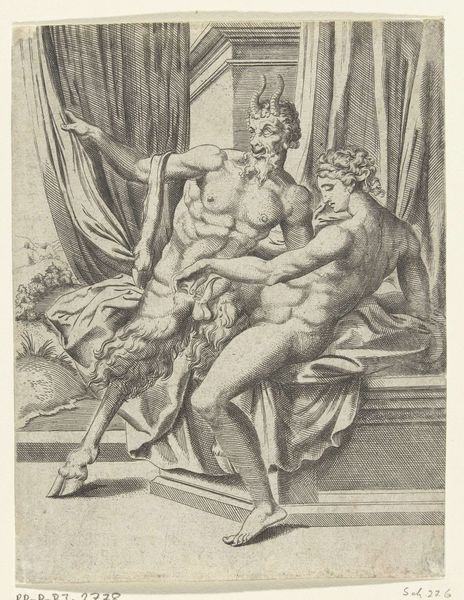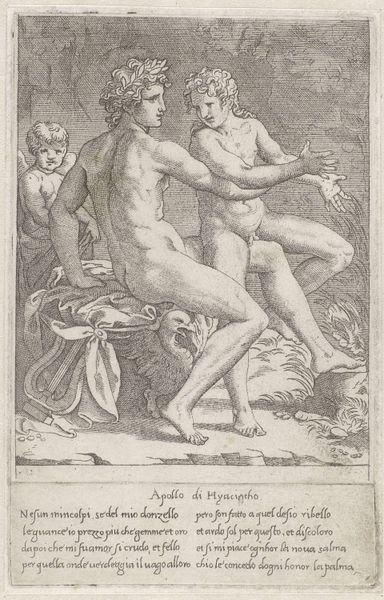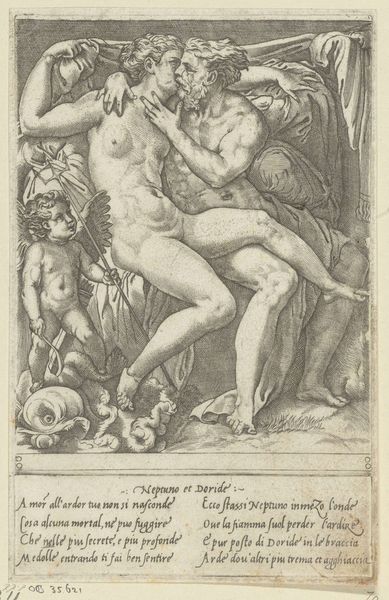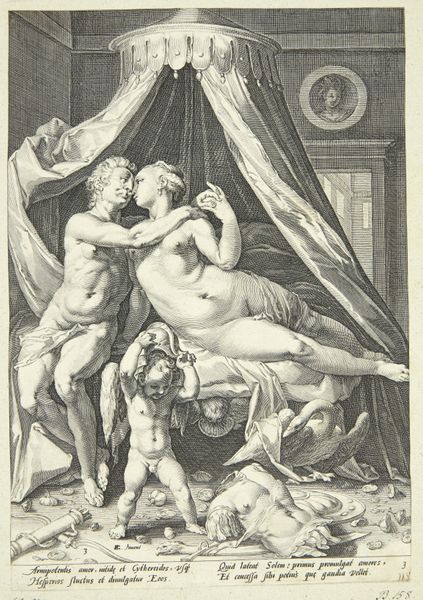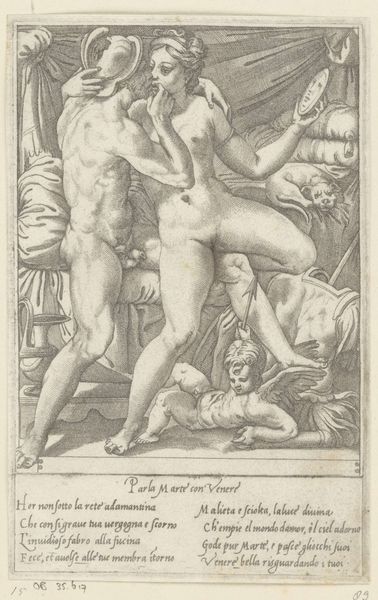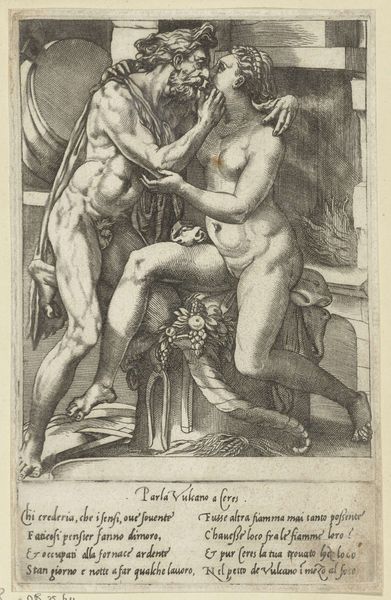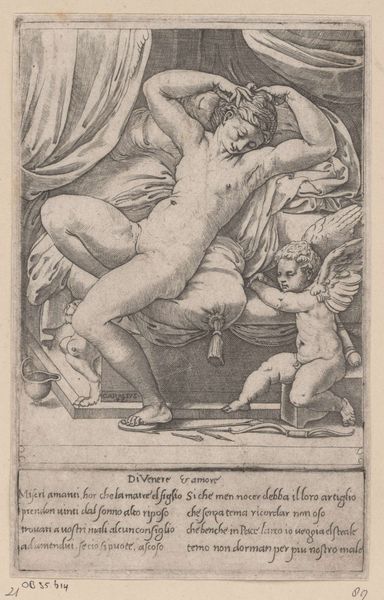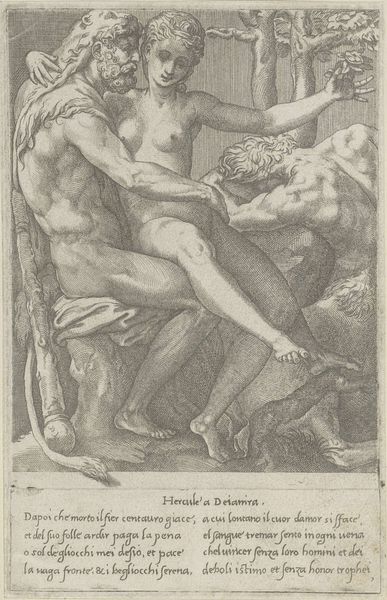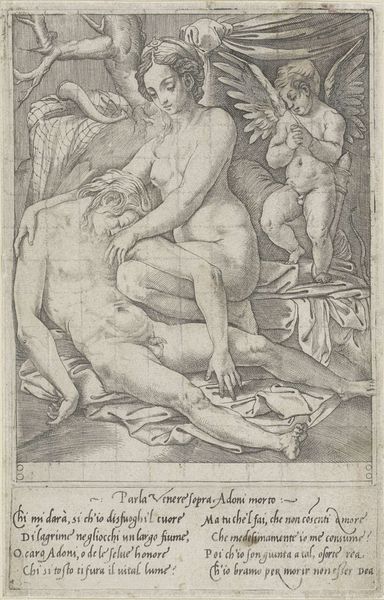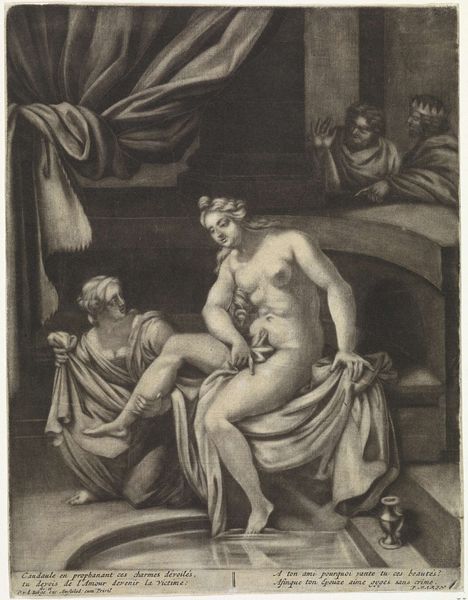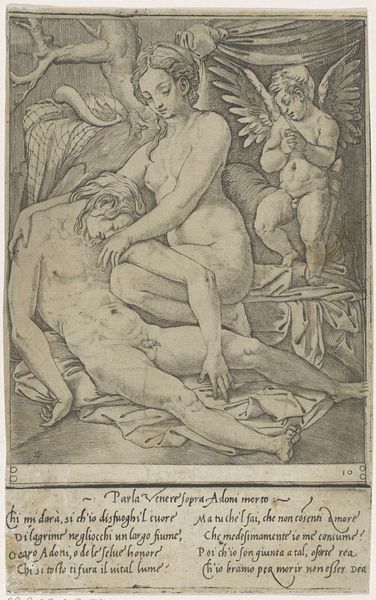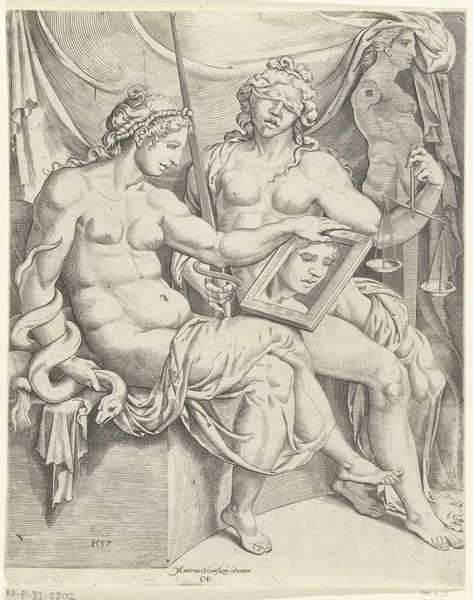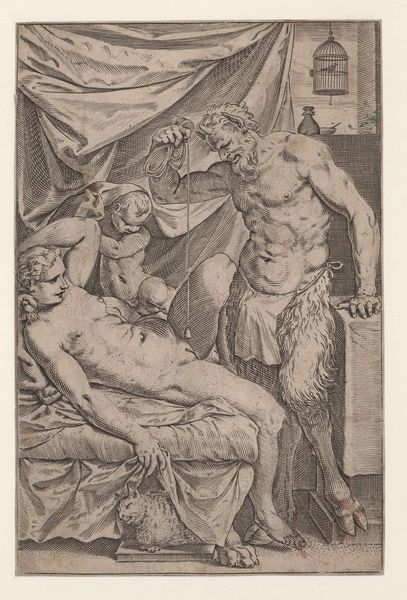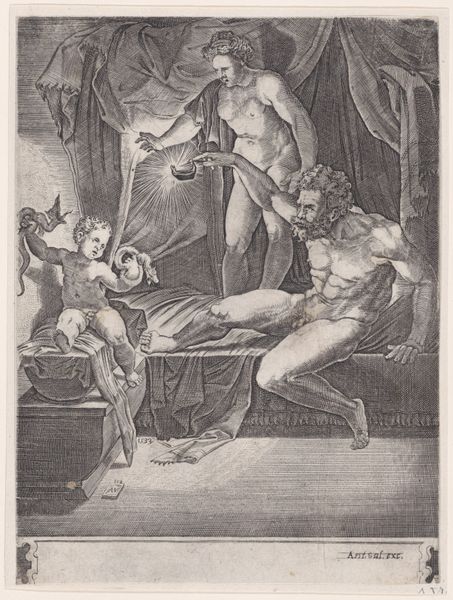
print, engraving
#
allegory
# print
#
old engraving style
#
mannerism
#
figuration
#
line
#
history-painting
#
italian-renaissance
#
nude
#
engraving
#
erotic-art
Dimensions: height 218 mm, width 135 mm
Copyright: Rijks Museum: Open Domain
Giovanni Jacopo Caraglio made this print, “Loves of the Gods,” in the 16th century through a meticulous process of engraving. Look closely, and you can see how the material of the copper plate has influenced the appearance. Caraglio used a tool called a burin to incise lines into the metal, creating grooves that would hold ink. The depth and density of these lines determine the tonal range of the print, from the darkest shadows to the lightest highlights. The printmaking tradition has a fascinating social history, allowing for the mass production and dissemination of images. This reproductive technology made art more accessible, connecting it to broader issues of labor, politics, and consumption. Consider the amount of work involved in creating such a detailed image, and how this labor is multiplied through the printing process. It bridges the gap between the unique artwork and the world of accessible design. By emphasizing the importance of materials, making, and context, we challenge the traditional distinctions between fine art and craft, revealing the rich layers of meaning embedded within this print.
Comments
rijksmuseum about 2 years ago
⋮
No collection of erotic prints should be without Caraglio’s Loves of the Gods. Consisting of twenty-some prints, this scandalous series presents the amorous escapades of the classical gods fairly explicitly. The deities give in to pure lust with great abandon, which involves quite some acrobatic feats. These scenes will doubtless have titillated many a viewer.
Join the conversation
Join millions of artists and users on Artera today and experience the ultimate creative platform.
